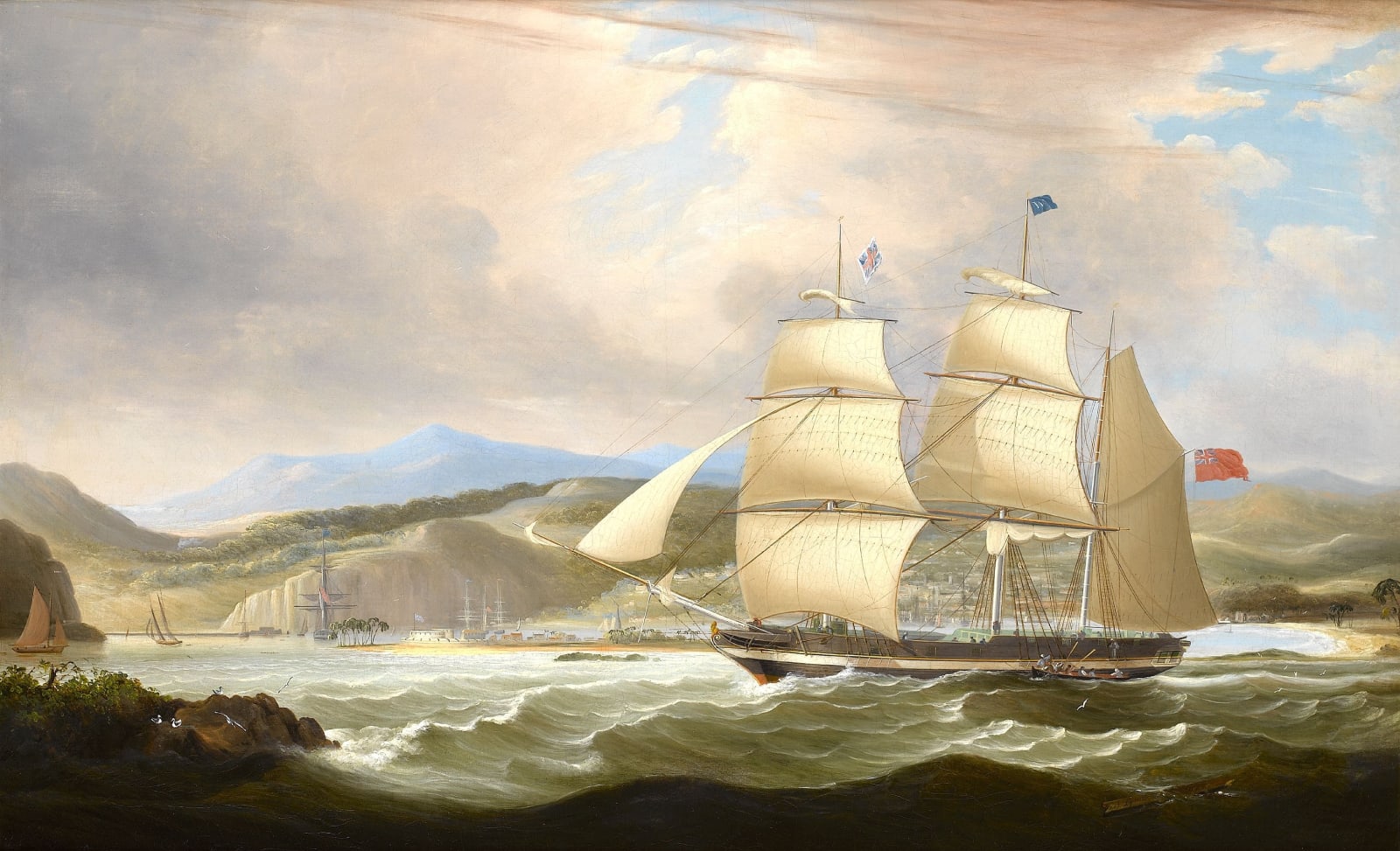John Lynn British, fl. 1828-1838
The 277-ton wooden barque Woodmansterne was built at Shields, near Tynemouth, in 1828. Owned by Blaksley & Co, her intended route was London to Jamaica and her first master was Captain Wrangles, as evidenced from the blue flag bearing a large 'W' at her masthead which may indicate he had some share in her. Despite several changes of commander and also a short-lived additional owner in the guise of Barrett & Co., apparently in partnership with Blaksley, Woodmansterne continued in the Jamaica trade until 1838 when she is recorded as sailing to Ascension Island in the South Atlantic. The following year (1839) saw the appointment of her final master, Captain Hinderwell, after which she seems to have ceased regular West Indian sailings and turned, instead, to a variety of routes, presumably wherever a cargo was available. In 1841, she was running from Falmouth to Malta and, in 1843, it was London to Trinidad followed by London to Africa later in the same year. Still trading to Africa in 1845, she then started voyaging to Madras, most times out of London but also from Liverpool. Her last voyage, still owned by Blaksley & Co. and still commanded by Captain Hinderwell, is listed as Liverpool to Madras in 1847 after which she disappears from record, presumably wrecked beyond Home Waters.
The West India trade, although not as extensive as that to the sub-continent of India, was nevertheless immensely valuable and made many great fortunes. The three priceless staples of that trade were sugar, rum and molasses, and the ships which carried them – the so-called 'West Indiamen' – were regarded with almost the same awe and respect as their more glamorous cousins, the legendary East Indiamen.
John Lynn was a painter of shipping and coastal scenes. He exhibited at the British Institution from 1828 – 1838 and he also exhibited at the Suffolk Street Gallery. His output was small, but his works are always of exceptional quality.
The National Maritime Museum has three of his works, including an oil painting measuring 11 3/4 x 17 3/4 inches of a similar scene, painted 5 years after our picture, in 1834 (BHC1161). This would appear to be the only other view of Jamaica in his oeuvre.
